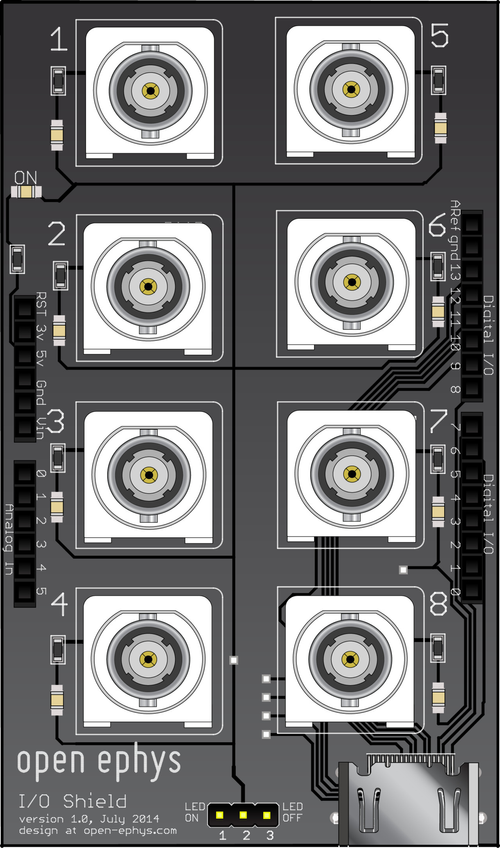Versions Compared
Key
- This line was added.
- This line was removed.
- Formatting was changed.
Some applications require to generate (or read) digital channels on the host-PC running the GUI. Most commonly, this is needed when closed-loop experiments make use of event detection on the host PC, for example with the phase-detector plugin.
The arduino shield for I/O from the host-pc can generate up to 8 channels of digital I/O. Each channel can be assigned as in or out and assigned to an event channel in the GUI.
On the Arduino, this is implemented via the Firmata firmware (http://playground.arduino.cc/Interfacing/Firmata). This makes it simple for a computer to access the state of the Arduino pins via USB.
For a similar, but much more powerful signal output device, check out the PulsePal (https://sites.google.com/site/pulsepalwiki/home) which also works seamlessly with the Open Ephys GUI.
Arduino I/O is controlled directly from the Arduino Output sink (in development) in the GUI. Currently, the I/O shield is strictly passive and makes no use of the analog pins. However, you can still access all arduino pins through the headers.The documentation for the Open Ephys Acquisition Board has been moved to: https://open-ephys.github.io/acq-board-docs/index.html
Downloads
Arduino I/O on Github
